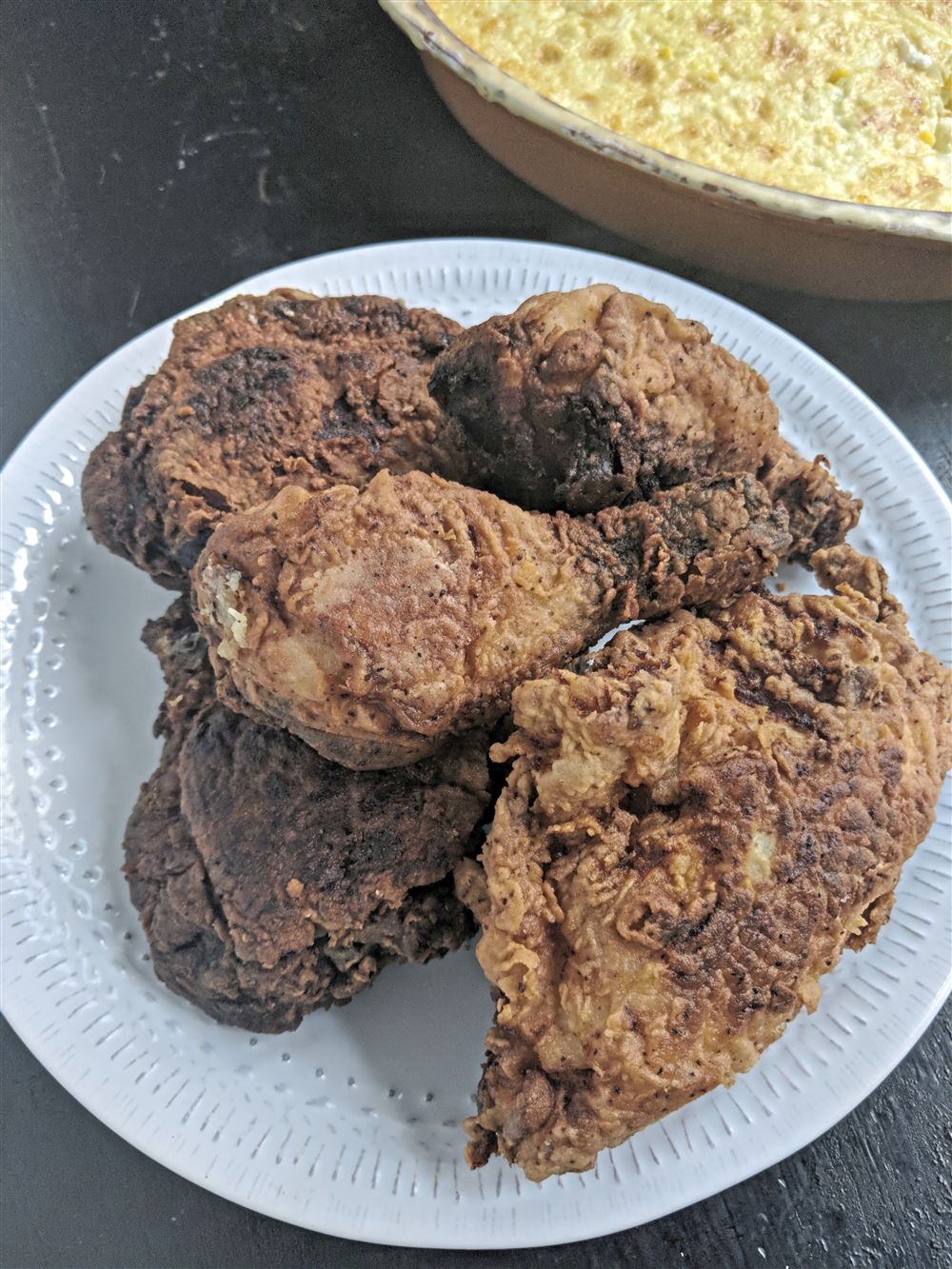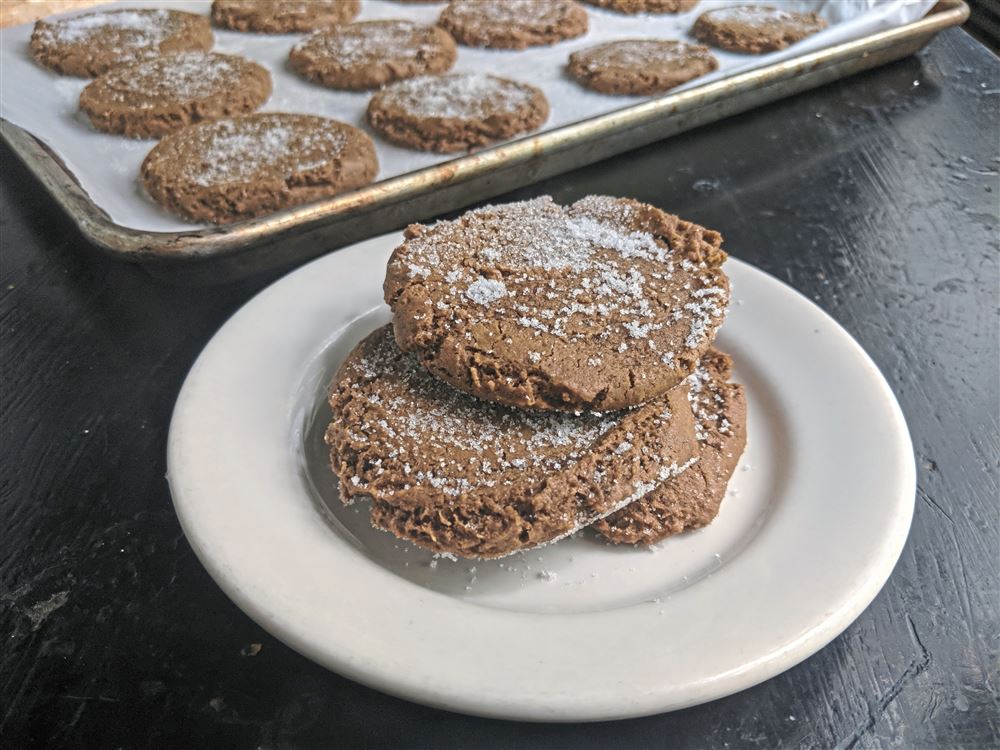Ever since it opened two years ago on the National Mall in Washington, D.C., the National Museum of African American History and Culture has been a popular destination for visitors to our nation’s capital.
It’s recorded more than 3.5 million visits so far, and the crowds show no signs of abating; at lunchtime on a recent Monday, more than 100 people were standing in a long line, waiting for space to become available inside the galleries
It’s a tough, immersive experience that can at times make you feel like crying — you learn about everything from the atrocities committed during the slave era, to the lynchings in the Jim Crow South, to the struggles and violence of the Civil Rights movement. But it’s uplifting, too, in that you come away understanding and appreciating the many often untold contributions African-Americans made in building this country.
That includes their foodways. Brought to our shores by slaves in the 17th and 18th centuries and passed down over the generations, the culinary traditions of Africa and the Caribbean greatly influenced and shaped what we eat today at home and in restaurants.
You can try some of the dishes associated with black cooking at the museum’s cafeteria Sweet Home Cafe. (And yes, you need a ticket to eat here.) Run by executive chef Jerome Grant, the 12,000-square-foot restaurant with 400 seats showcases the migration of African-Americans pre- and post-slavery across the U.S. through a tasty array of entrees, sides and desserts — the fried chicken and okra of the agricultural South, shrimp and grits and Hoppin’ John of the Creole Coast, and Caribbean-style pepper pots of the Northern states. The restaurant averages a whopping 1,300 meals a day.
Some of the recipes are in the just-released “Sweet Home Cafe: A Celebration of African American Cooking” (Smithsonian Books; Oct. 23 2018; $30).
Beautifully illustrated with mouth-watering food shots and reprints of postcards and historical photos, the collection includes headnotes, sidebars and features written by culinary historian Jessica B. Harris, who's penned 12 cookbooks on the foods and foodways of African culinary culture. Recipes were compiled by the museum’s supervising chef Albert Lukas and Mr. Grant, who oversees the cafe.
It’s a fascinating read. Most everyone, for example, recognizes fried chicken, black-eyed peas and okra as traditional dishes of the agricultural South. But African-American food is so much more than that. Its roots stretch all around the world, and blossomed not just in the South or along the Creole Coast, but in the Northern states, too, and also along the Western range.
The museum serves a version of Thomas Downing’s New York City oyster pan roast, for example, and the recipe for it gives a history lesson about its creator and where the dish was originally served. (Known as the black Oyster King of New York, Downing’s restaurant was a stop on the Underground Railroad.) A chuck wagon stew known as Son-of-a-Gun stew pays homage to the freed black slaves who worked as ranch hands in the West after the Civil War.
There’s 109 recipes in all, both from the cafe and from black home and professional cooks. Many are expected soul food standards, including buttermilk fried chicken and a dessert-like corn pudding that would be welcome at any Thanksgiving table. But there’s some new world African foods, too, such a famous Trinidad street food known as Trini Doubles and a Madras-style curried goat with East Indian roots from Jamaica.
The gumbos and Cajun stews of the Creole Coast included in the cookbook, conversely, touch on the culinary traditions of France and Spain, while a “Smoking Hot” oxtail pepper pot — popular in 19th-century Philadelphia — originated in the West Indies.
The recipes will open a cook’s eyes to the diversity and richness of African-American cuisine. Categorized by meal (salads and sides, soups and stews, mains, etc.), each also includes a map in the corner highlighting its region of origin. A chapter on “Basics” includes recipes for spice blends and rubs, brines, stocks and sauces, and you’ll also find sample menus for special occasions such as Juneteenth, Mother’s Day and Family Reunion.
And if you’re headed to Washington and want to dine at the cafe? Advance timed entry passes for individuals are released on the first Wednesday of each month. Same-day timed entry passes are available online beginning at 6:30 a.m. daily until they run out through its website, nmaahc.si.edu. Or, try for walk-up entry after 1 p.m. On “Walk-Up Weekdays” in January, individuals can enter the museum on a first-come, first-served basis Monday through Friday for the entire month of January.
Gretchen McKay: gmckay@post-gazette.com, 412-263-1419 or on Twitter @gtmckay.
Corn Pudding
PG tested
This dish is representative of African-American food served in the agricultural South. Notes the author: “It is a history lesson in a casserole, in that it combines the British tradition of pudding-making with Native American corn in a dish that is pure Southern comfort food.”
5 ears corn, shucked and cleaned of silk
2 tablespoons sugar
1½ teaspoons kosher salt
1 tablespoon all-purpose flour
½ teaspoon finely grated nutmeg
1 tablespoon butter, plus 2 tablespoons melted
½ yellow onion, very finely chopped
1 large egg, beaten
2 cups half-and-half or light cream
¼ cup cream cheese at room temperature
Preheat oven to 350 degrees.
Cut corn kernels from cobs and transfer to large bowl. Add sugar, salt, flour and nutmeg to corn and mix to thoroughly combine.
Melt 1 tablespoon butter in a small saute pan over medium heat. Add onion and cook until translucent and tender (do not brown), about 5 minutes. Add onion to corn in bowl.
In separate bowl, whisk egg, half-and-half, cream cheese and 2 tablespoons melted butter until well blended. Pour cream mixture into the bowl with corn and onion and mix until all ingredients are fully incorporated.
Lightly grease a 9-by-13-inch baking dish with butter. Pour corn mixture into dish and bake for 40 to 45 minutes, until set and golden brown. Serve hot.
Serves 4 to 6.
— “Sweet Home Cafe Cookbook: A Celebration of African American Cooking” (Smithsonian Books; Oct. 23, 2018; $30)
Buttermilk Fried Chicken
PG tested
Fried chicken is an iconic African-American food, especially in the agricultural South. It also was a means of making money. In Gordonsville, Va., after the emancipation, black women known as “waiter carriers” were able to create personal wealth by selling fried chicken to passengers on trains.
Brining the chicken overnight adds moisture and flavor to the meat. Olive oil and butter have low smoke points, do don’t use them for frying — try peanut, canola or vegetable oil instead. Be careful not to let the temperature go above 350 degrees, or the chicken will burn.
4 pounds bone-in chicken pieces
Poultry brine (recipe follows)
1 quart buttermilk
1 teaspoon kosher salt
½ teaspoon freshly ground black pepper
½ teaspoon sweet Hungarian paprika
4 to 6 dashes Tabasco sauce
2 garlic cloves, crushed
2 or 3 thyme leaves
3 cups peanut oil, for frying
4 cups seasoned flour (recipe follows)
Place chicken pieces in large stainless bowl or storage container. Pour brine over chicken, ensuring they are fully covered. Transfer to fridge and let rest for 6 to 8 hours.
Remove chicken from fridge and drain off brine. Discard liquid.
Combine buttermilk, salt, pepper, paprika, Tabasco, garlic and thyme in large bowl. Add drained chicken and turn to coat well. Refrigerate for 4 hours.
When ready to cook chicken, heat a 10-inch cast iron skillet over medium heat. Add oil and allow it to slowly heat to 350 degree on a deep-frying thermometer.
While oil is heating, drain chicken in colander. Put seasoned flour in bowl. Dredge chicken, one piece at a time, in flour until coated on all sides. Transfer chicken to wire rack set over a baking sheet, side by side but not touching. When oil is hot, add 5 or 6 pieces, being careful not to crowd the pan. Oil should just reach the top of the chicken. Fry until deep golden brown all over and internal temperature reaches 165 degrees on an instant-read thermometer, 20 to 25 minutes. Transfer to wire rack with tongs or slotted spoon, and repeat with remaining chicken.
Serve hot or at room temperaure.
Serves 4 to 6.
— “Sweet Home Cafe Cookbook: A Celebration of African American Cooking” (Smithsonian Books; Oct. 23, 2018; $30)
Note:
For brine: Pour 2 quarts of water into a large stockpot, and add 1¼ cups salt, ¾ cup sugar, 1 tablespoon each onion and garlic powder, 1½ teaspoons pepper and 1 bay leaf. Bring to boil and simmer 5 minutes. Remove from heat and add 2 quarts cold water. Cool until temperature is 40 degrees, then use.
For seasoned flour: To 4 cups all-purpose flour add 2 tablespoons salt, 1½ tablespoons onion powder, 1 tablespoon black pepper, 1 tablespoon garlic powder, 1½ teaspoons sweet paprika and 1 teaspoon white pepper.
Joe Froggers
PG tested
These sugar-dusted cookies are essentially gingerbread in cookie form. They’re named for former slave Joe Brown, who ran a tavern with his wife, Lucretia, in Marblehead, Mass., in the early 1800s. They would originally have been prepared with rum and seawater.
⅓ cup water
1 cup molasses
2½ tablespoons aged dark rum
3½ cups all-purpose flour
1½ teaspoons fine sea salt
1 teaspoon baking soda
1¼ teaspoon ground ginger
½ teaspoon ground cloves
½ teaspoon ground allspice
¼ teaspoon freshly grated nutmeg
8 tablespoons butter, room temperature
1 cup sugar, plus more for sprinkling
Combine water, molasses and rum in small saucepan, bring to a simmer and simmer for 1 minute. Remove from heat and let cool.
Sift flour, salt, baking soda, ginger, cloves, allspice and nutmeg together in bowl.
Using stand mixer with paddle attachment, cream butter and sugar together on medium-low speed until light and fluffy, about 3 minutes. Add cooled molasses-rum mixture and beat until blended.
Reduce mixer speed to low and gradually add dry ingredients. Mix just until ingredients are incorporated and a dough forms. Do not overmix.
Divide dough in half and wrap each piece in plastic. Chill in refrigerator for 1 hour.
Preheat oven to 375 degrees. Line 2 baking sheets with parchment.
Using a large spring-action ice cream scoop, place scoops of dough on prepared baking sheets, spacing them 1 inch apart. Flatten tops with the bottom of a large glass, then sprinkle tops with sugar.
Bake until cookies are set but still chewy, 6 to 8 minutes. (Mine took about 10 minutes.) Let cookies cool at room temperature, then transfer to an airtight container and store at room temperature.
Makes 2 dozen cookies.
— “Sweet Home Cafe Cookbook: A Celebration of African American Cooking” (Smithsonian Books; Oct. 23, 2018; $30)
First Published: October 17, 2018, 11:00 a.m.



















